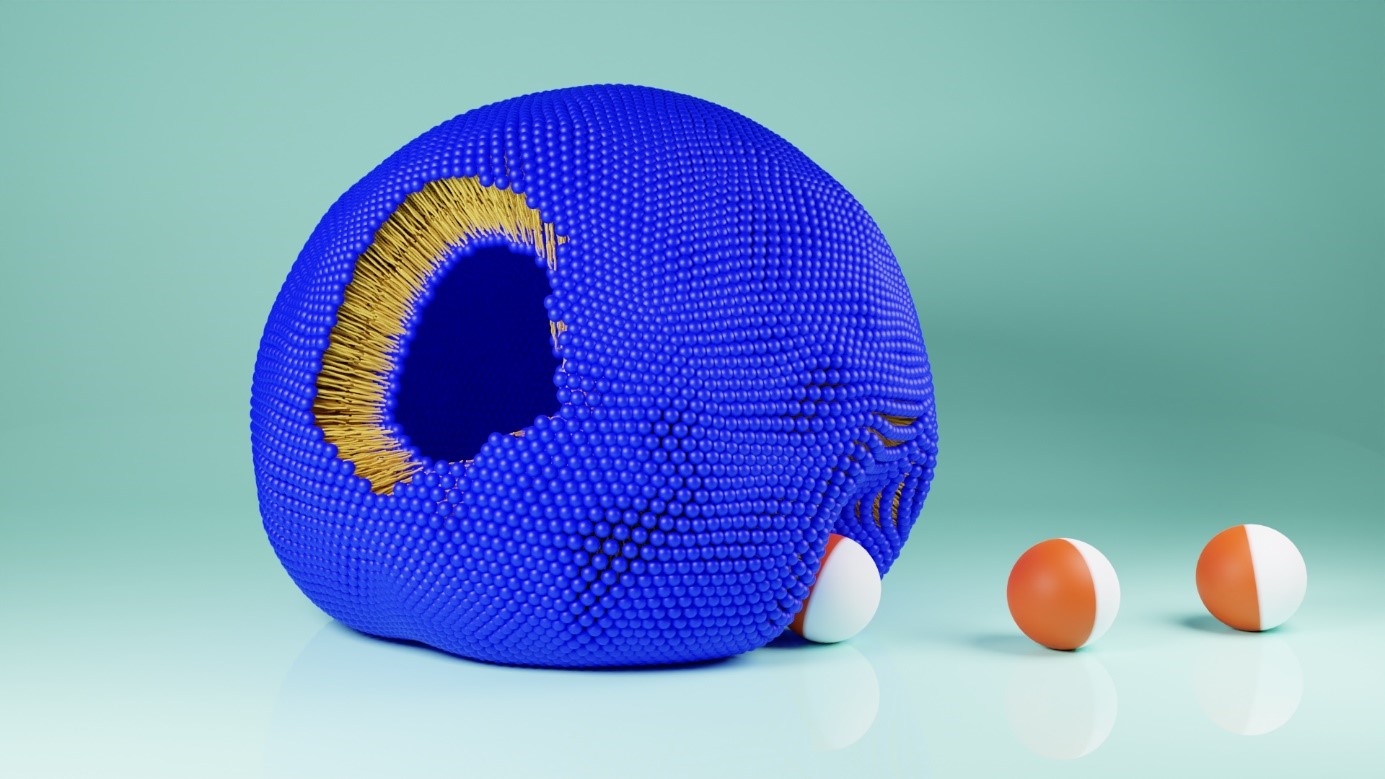Institut Charles Sadron News

Publié le 18/09/2024 par Stocco Antonio
See in the CNRS CHEMISTRY News
Artificial microswimmers are systems developed to mimic and understand the behavior of biological microswimmers such as bacteria, spermatozoa or certain algae. A precise description of the physical interactions dictating the behavior of these objects when approaching interfaces such as cell membranes is essential. Indeed, they are promising candidates for performing complex tasks at the microscopic scale in a biological environment, particularly in the context of medical applications such as the drug delivery.
Several obstacles currently hinder the development of realistic applications for these objects in biological environments. In particular, the propulsion of these artificial microswimmers requires a fuel (very often hydrogen peroxide) which can alter the health of biological tissues and cells.
Florent Fessler and Antonio Stocco, in collaboration with a team of chemists from the Technische Universität Dresden, are therefore proposing a new propulsion system. They have thus achieved the self-propulsion of micrometric silica particles partially covered with a nanometric layer of copper, which use glucose in physiological concentration and visible light as fuel. Even better, the hydrodynamic flow generated by the self-propulsion mechanism of these particles generates attractive interactions with the model cell compartments leading to the deformation of the membrane until the microswimmer is completely engulfed by it.
Their studies combining "bright field" microscopy, fluorescence microscopy, and confocal microscopy, have made it possible to identify the different physical interactions between the microswimmer and the model membrane that lead to endocytosis, i.e. the penetration of the microswimmer inside the cell. These results published in the journal Soft Matter allow us to better understand the fundamental mechanisms of interaction between an active micrometric body and a cell membrane, thus providing leads for new applications such as, for example, the vectorization of drugs

Artificial microswimmer called "Janus" (in white and ochre) approaching and deforming a giant lipid vesicle (made up of phospholipids here with a blue hydrophilic head and yellow tails), a model system for a cell. © Florent Fessler/Thibaud Fessler
The illustration by Florent Fessler/Thibaud Fessler is on the front page of the CNRS Chimie website and in the banner of the Twitter-X account.
Reference:
Florent Fessler, Martin Wittmann, Juliane Simmchen & Antonio Stocco, Autonomous engulfment of active colloids by giant lipid vesicles, Soft Matter 2024
https://hal.science/hal-04679998
https://pubs.rsc.org/en/content/articlepdf/2024/sm/d4sm00337c
Contact:
Florent Fessler
Doctorant, Institut Charles Sadron (ICS)
florent.fessler@etu.unistra.fr
Antonio Stocco
Directeur de recherche CNRS, Institut Charles Sadron (ICS)
antonio.stocco@ics-cnrs.unistra.fr